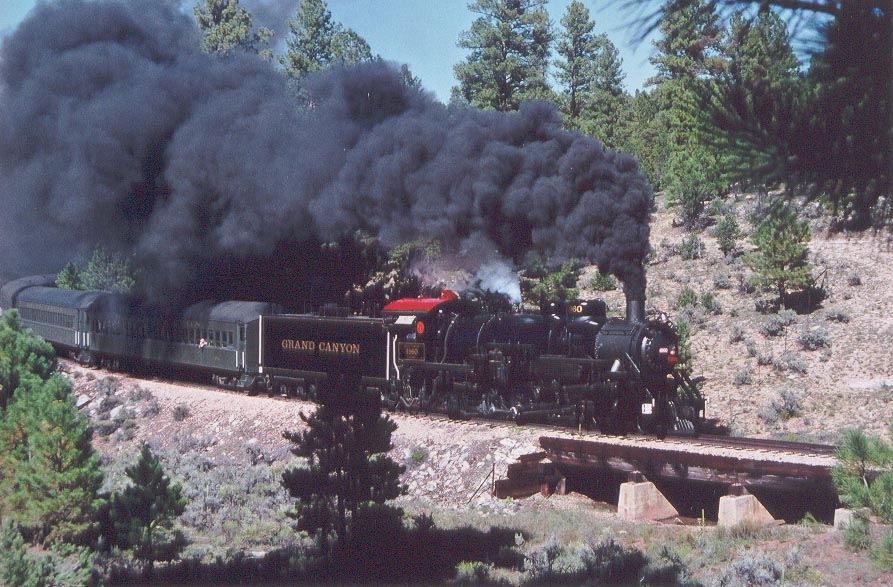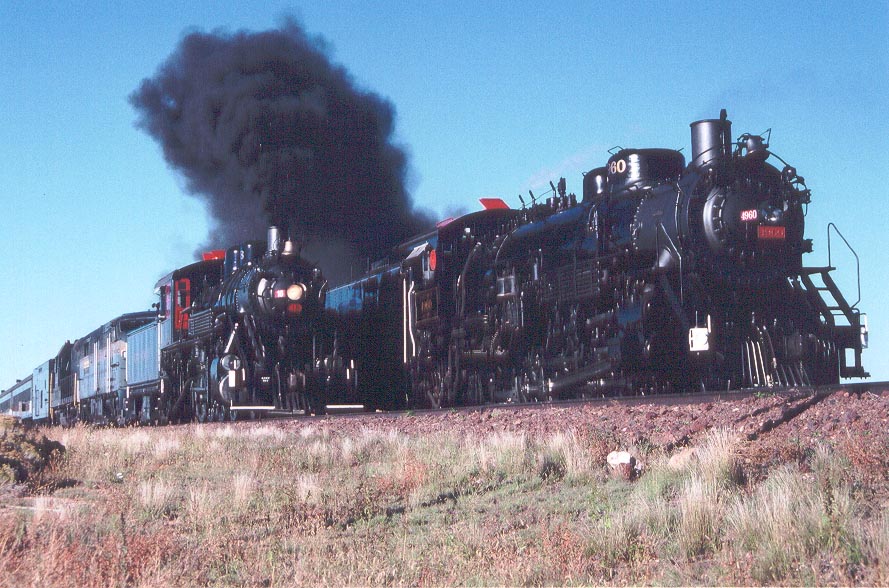 |
| GRAND CANYON RAILWAY - PAGE 2 |
 |
| Good pictures can result from lighting, composition, subject, or because they tell a story. This one combines all of the above. In August of 2000, my friend Tom Moungovan came to visit. We chased the train to the canyon and back, and this was the last shot of the day. After getting a shot at Valle, we raced towards Williams, trying to jump back ahead. The light was 'killer', being accented by the moisture in the air from the earlier monsoon storms. We overtook the train at Red Lake and arrived at Pronghorn Crossing with smoke on the horizon and the train only minutes away. |
| Tom decided to stay by the crossing and take what he could get, but I felt that the light was too good to waste. With camera in hand, I jogged about 1/4 mile down to this bridge and set up this shot. It's the only time I've seen water in the stream. The train arrived about 30 seconds later. |
| #4960 Steam star of the Grand Canyon Railway. This was taken on a test run April, 2000. Test runs are a great opportunity to chase the train. Since they don't follow the regular schedule, they can lead to unusual lighting conditions. Also, the consist can be extraordinary. This was taken at MP 4, the longest trestle on the line, about 8:15 am, 2 hours earlier than the scheduled train reaches this spot. |
 |
| Another of #4960, this time leaving Coconino Canyon Southbound on a Railfan Weekend in October 1997. This photo was shot on Kodachrome 200, then made into a print. I've not had much success previously with making prints from slides, but I'm quite pleased with how this one turned out. |
 |
| Also shot on Kodachrome 200 during Railfan Weekend 1997, #18 meets #4960 at Williha Southbound. #4960 is pulling the Railfan Special. #18 is heading train #3, the Williams Flyer. |
| #4960 is a 2-8-2 Mikado, built by Baldwin Locomotive Works in 1923 for the Chicago, Burlington, & Quincy Railroad. She became famous in the 1960's for all of the Fan Trips she ran as all the other steam engines were being retired. Many of those trips involed young school children, giving her the nickname 'The Teacher'. Grand Canyon Railway purchased the engine in 1989, spending $1.6 million on her rebuild. She became operational in July 1996 and has run almost daily during the summer ever since. |